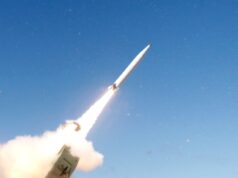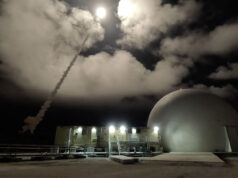Raytheon Company and DARPA have completed a successful baseline design review for the Tactical Boost Glide hypersonic weapons programme.
This, they say, is part of an effort in establishing the company’s technical approach for a critical design review and moving the system a step closer to development and use.
A boost glide weapon uses a rocket to accelerate its payload and achieve hypersonic speeds – velocities greater than Mach 5. During flight, the payload separates from the rocket and glides unpowered to its destination.
“We understand the urgency of the need and are working fast to deliver this advanced technology to our nation’s military,” said Dr. Thomas Bussing, Raytheon Advanced Missile Systems vice president.
“The goal is to keep America ahead of emerging threats, and we are well on our way.”
The US military will use hypersonic weapons to engage from longer ranges with shorter response times and with greater effectiveness than current weapon systems.
Earlier this year, Raytheon received a $63 million DARPA contract to further develop the Tactical Boost Glide program, a joint effort between the agency and the U.S. Air Force.










France too, January 21, Minister of Armies Florence Parly announced the launch of a program for the development of hypersonic weapons. France joins a race with China, the United States and Russia.
Called V-max, this project must lead to a first flight test by the end of the year 2021. Arianegroup must be the industrial project manager of the project.
The hypersonic glider demonstrator should be able to move at a speed exceeding Mach 5 to bypass missile defenses. Another advantage is the threat of a conventional or nuclear strike in record time in the context of deterrence.
Research on hypersonic propulsion is already conducted by the French armies. The future ASN4G nuclear missile, successor to the ASMP, should thus integrate this capacity. But the glider announced by Florence Parly would have the added advantage of being manoeuvrable at very high speed and therefore to be even more difficult to intercept.
http://www.aircosmosinternational.com/arianegroup-to-lead-french-hypersonic-glider-project-119797